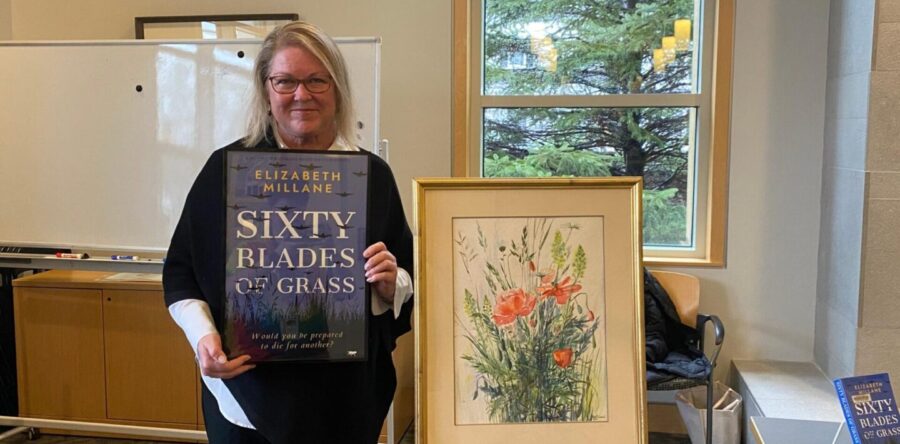By Riley Fontana
Hometown Weekly Reporter
The Westwood Public Library hosted author Elizabeth Millane on January 13 to discuss her book, "Sixty Blades of Grass." Millane, a first-time author, recounts her family's experiences during World War II in this historical fiction novel set in the Dutch Underground in Holland.
During the presentation, Millane shared insights into her process of collecting and weaving her family's stories into the narrative. She emphasized the significance of sharing these accounts, particularly given their often undocumented nature. Millane clarified that while the characters in the book were based on real family members, she altered their names during the publishing process to protect their identities. Additionally, she expanded on the challenges she faced as a first-time author in getting published, highlighting the numerous rejections she encountered but encouraging others not to lose hope.
As part of her presentation, Millane brought a painting and explained its role as a coded communication method among underground members. The flowers and grass depicted in the painting conveyed specific messages about the Jewish people they were assisting in transportation. These coded paintings played a crucial role in keeping people safe during hiding, inspiring the title of the book.
In addition to discussing her writing journey, Millane read two excerpts from the novel. These readings captivated the audience, generating interest in the narrative. The emotional impact of World War II stories, especially when shared by someone closely connected to the novel, resonated deeply with the crowd.
"Sixty Blades of Grass" by Elizabeth Millane is available at the Westwood Public Library, offering a poignant portrayal of a family's involvement in the Dutch Underground during World War II.
In conclusion, Elizabeth Millane's visit to the Westwood Public Library provided a profound glimpse into the making of "Sixty Blades of Grass" and the compelling narrative it encapsulates. Millane's dedication to preserving her family's wartime experiences, coupled with her resilience as a first-time author, left an indelible mark on the audience. The insights into the coded paintings and their crucial role in aiding the Jewish people during World War II added a layer of depth to the understanding of the book's title.
























